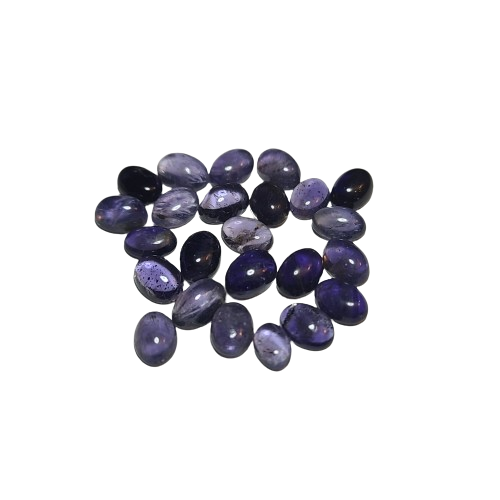Iolite Information

Iolite
Iolite, also known as "water sapphire," is a gemstone prized for its distinct blue to violet hues, often exhibiting a pleochroic effect where it shows different colors from different angles. It has been valued throughout history for its unique optical properties and captivating color variations.
Facts About Iolite:
- Mineral Type: Iolite is a variety of the mineral cordierite, composed of magnesium iron aluminum cyclosilicate. It belongs to the group of silicate minerals.
- Locations Found: Major deposits of iolite are found in Brazil, India, Madagascar, Sri Lanka, Tanzania, and the United States (particularly in Wyoming). It is also found in smaller quantities in various other locations worldwide.
- Mohs Hardness: Iolite has a hardness of 7 to 7.5 on the Mohs scale, making it suitable for a variety of jewelry applications.
- Common Treatments: Iolite is typically untreated. Occasionally, it may be heat-treated to enhance its color or clarity, but this is relatively uncommon.
- Refractive Index: The refractive index of iolite ranges from approximately 1.522 to 1.578, depending on the crystal orientation, contributing to its distinct play of colors.
- Birefringence: Iolite exhibits strong birefringence, typically ranging from 0.008 to 0.012. This property is responsible for its pleochroic nature, where it displays different colors when viewed from different angles.
- Specific Gravity: The specific gravity of iolite ranges between 2.58 and 2.66, indicating its density relative to water.
Iolite's intriguing color-changing effect and durability make it a favored gemstone for both collectors and jewelry enthusiasts. Its historical significance and association with navigation (as it was used as a polarizing filter in Viking navigation) add to its allure. Whether set in rings, earrings, pendants, or bracelets, iolite continues to captivate with its mystical appearance and distinctive optical characteristics, making it a unique addition to any gemstone collection.
